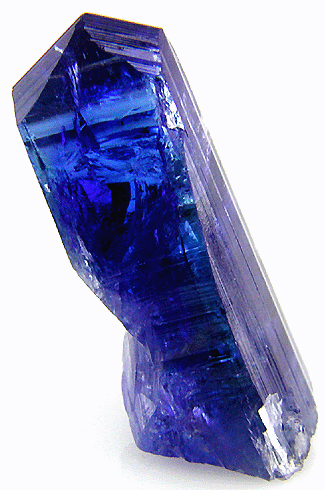Tanzanite
Hardness:6-7
Specific Gravity: 3.35
Enhancements:Almost Always Heat Treated
The Tanzanite Gemstone is one of the most gorgeous gemstones mined in East Africa. Tanzanite is a stunning variety of zoisite with a velvety blue color. You can also find a tinge of purple in Tanzanite gemstones. The Tanzanite gem stone was first found in the year 1967 and was given the name Tanzanite by Tiffany And Company, the gemstone was found in Tanzania and was therefore named Tanzanite. This gemstone was introduced in the world market in the year 1969. Henry Platt, the then vice-president expended much effort marketing this new gemstone with its new name, and Platt’s efforts paid off with this gemstone becoming extremely popular in a short period of time. The name Tanzanite caught on and is now a standard name in the gem trade.
In the shadow of Mount Kiliminjaro are the Merelani Hills of Tanzania and this is where the best Tanzanite gem stones are mined. Liberalization of the Tanzanian economy and new mining techniques have recently, made the Tanzanite gemstone more readily available.
The main appeal of Tanzanite is its lovely color. Its color ranges from pure blue to purplish-blue. It is highly pleochroic, and will display different color saturation when viewed at different angles. Planning is required when faceting a Tanzanite gemstone in order to cut it at an angle that delivers the stronger blue color rather than the duller gray tone. Care must also be exercised during faceting to prevent chipping, since this gemstone has perfect cleavage in one direction. For this same reason, Tanzanite jewelry should not be banged against hard surfaces and should be worn carefully.
Looking after Tanzanite jewelry:As a rule, do not wear jewelry with Tanzanite gemstones when doing physical work like gardening, cooking, clothes washing etc. This gemstone is a bit more delicate than many other gemstones and therefore cannot be worn when doing strenuous activity. Never clean Tanzanite jewelry in an ultrasonic cleaner. If you should be getting a Tanzanite ring resized or repaired ensure that the gemstone is first taken off from the mounting. The Tanzanite gemstone could shatter with the heat of a torch.
The Tanzanite gemstone shows a trichroic effect, that is a 3 color visibility when viewed from different angles. The three color effects are blue, purple and bronze. Legend has it that, the first pieces of Tanzanite was collected by the Masai herders when they noticed lightning strike some brownish zoisite crystals. The lightning is supposed to have changed the crystals to a beautiful blue color.
Almost always heat treated: The natural color of tanzanite is brownish and this is how most rough tanzanite appears. Heating of tanzanite results in a color change that ranges from Blue to Purple. Color enancement using heat treatment is a widely accepted treatment for the Tanzanite gem stone.

First Birthstone Addition Since 1912: Among the man gemstones discovered in the last 90 years, only one Tanzanite has been officially added to the birthstone. Tanzanite has been adopted as a December birthstone by the American Gem Trade Association
When valuing a Tanzanite gemstone keep the following in mind. Size: As is the case with most gemstones, big Tanzanite gemstones are more expensive and rare as compared to smaller pieces. Color: Tanzanite gems that are more blue rather than purple are more expensive. To bring out the blue color in the Tanzanite gemstone, the gemstone cutting loss is higher but worth the sacrifice. Inclusions, Cracks and Color zoning: Tanzanite gemstones with inclusions and cracks would be valued at a lower price. Further, if you notice a Tanzanite gemstone with uneven color through the gemstone, remember that the value would fall too. These rules also apply to most other gemstones.

